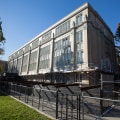The Community Board is the official municipal body whose primary mission is to advise elected officials and government agencies on issues that affect the common good. Providing quality supports and services is the goal of service providers, care coordination organizations, family care providers, and OPWDD care managers. These providers have information, tips, tools, regulations, and guidance to help ensure consistency of services across the state. The CB1 District Office has two main functions: processing complaints and requests for services from citizens and providing administrative support to the Community Board.
Rep. Grace Meng, State Senator Toby Stavisky, State Assemblyman Ron Kim, Councilmember Peter Koo, Queens Community Board 7, the New York City Office of Trials and Administrative Hearings (OATH), and local community organizations recently announced an upcoming public forum on Thursday, June 8 in downtown Flushing on what to do when a resident or business owner receives a subpoena from a New York City law enforcement agency. Community boards must present to the mayor and the city council their budget priorities for capital (projects) and expenditure (programs and services) for consideration when formulating the municipal budget. While the Community Board presents budget priorities on behalf of the district for consideration, the final decision on which projects, programs, and services are funded from the City budget is made by the Mayor and the City Council, with the collaboration of the county presidents. The Technology Advisory Committee oversees the Queens Community Board 3 website, social media channels (i.e., Facebook, Twitter), and other digital platforms. Community boards play an important advisory role on land use and zoning, the municipal budget, the provision of municipal services, and many other issues related to the well-being of their communities.
New York City community boards are involved in alcoholic beverage licenses, budget allocations, and local development regulations. New York City is divided into 59 geographical community districts, each of which has a designated community board. The Committee works with developers, business improvement districts, business associations, and government agencies to encourage the creation and retention of locally based small businesses by creating a business-friendly environment at the Queens Community Board. A community board is “the entry level to local government” where its problems at the local level must be raised and treated in a consultative manner according to Winfield. The Community Board is also responsible for providing advice on issues that affect the good and well-being of their district. In his 22 years as a member of the East Midtown board of directors, Claude Winfield said that he has been “practically the black person who has been on the community board for that entire period.” While the public is encouraged to attend and observe the procedures of the Community Board, only Board members can discuss and vote on motions that are presented. New York City's official policy on joint street names begins with a request that is made directly to the Community Board.
Don't worry too much if you don't have political connections; former vice president of Manhattan County and president of the East Harlem community board Matthew Washington suggested this. The following is an official list of Queens Community Board 1 members provided by the Queens Borough President's Office.




